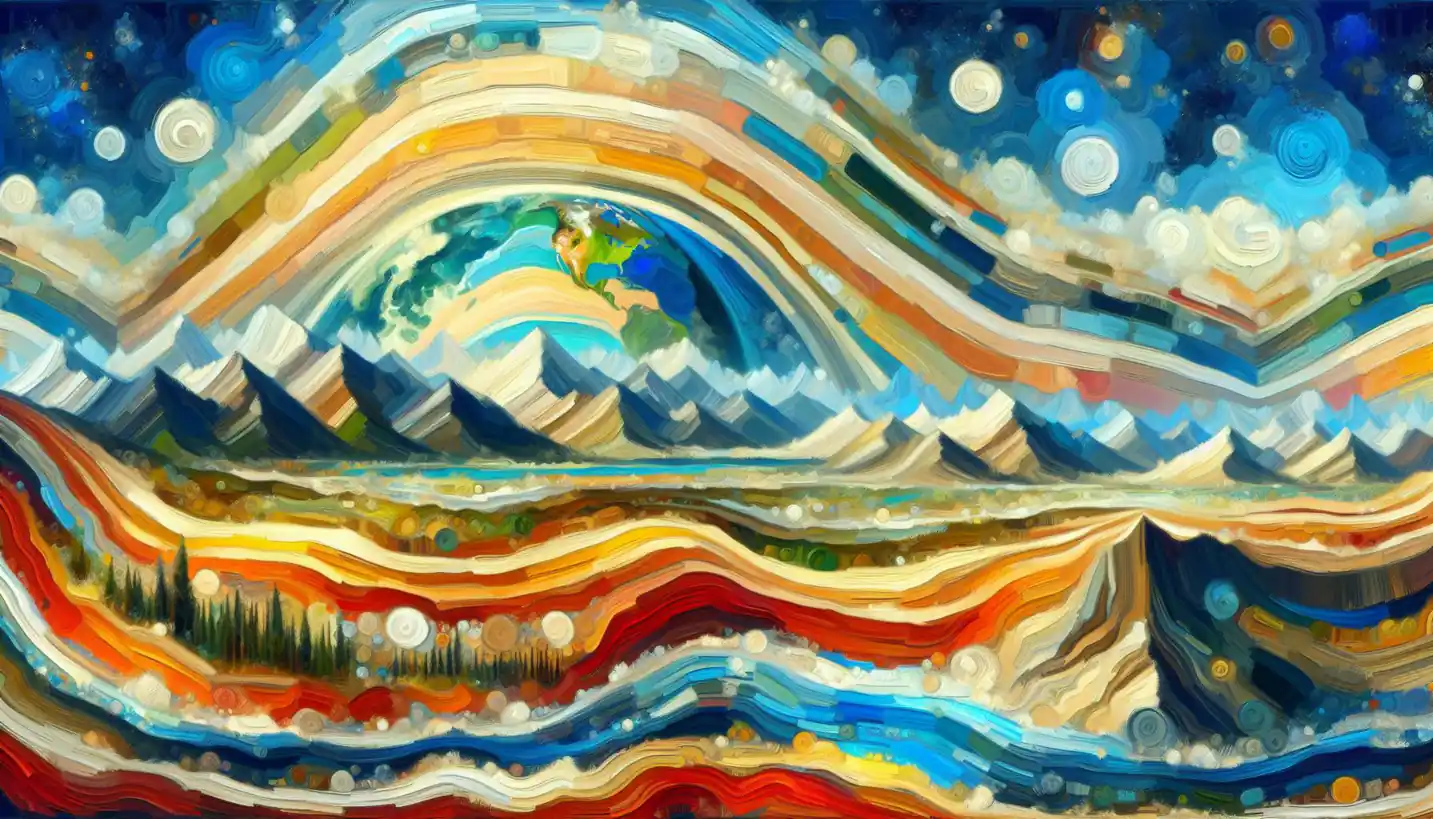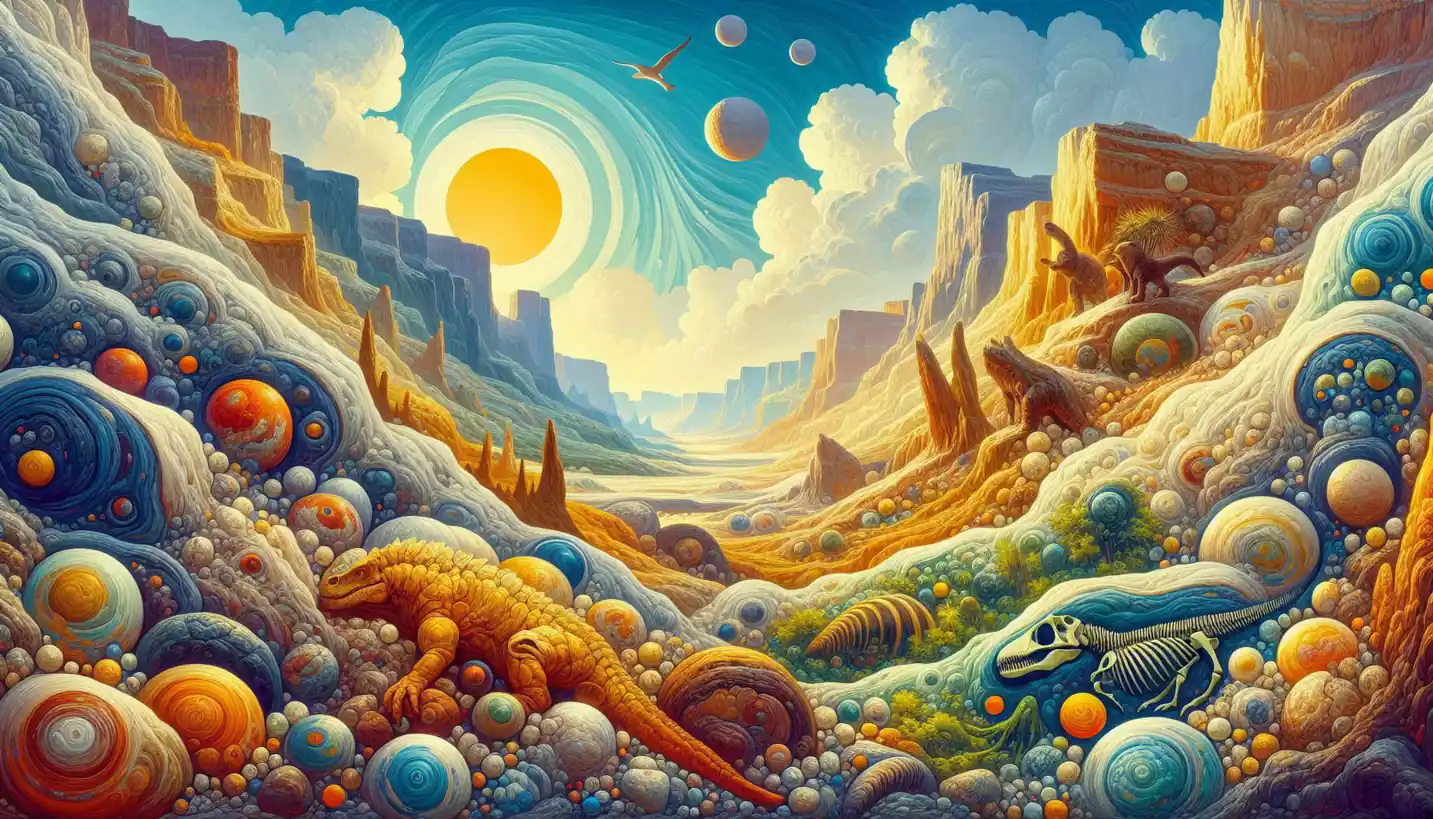· Earth Science · 4 min read
Cryoconite: The Mysterious Dust Transforming Glaciers
Cryoconite, mysterious glacier dust, has transformative powers. Discover how this earthy substance shapes glacier surfaces and influences climate change.

When we think of glaciers, we often imagine vast expanses of pristine ice stretching as far as the eye can see. But hidden within these icy giants is something quite fascinating and unexpected: cryoconite. It’s a peculiar mix of dust, soot, and organic matter that plays a surprisingly big role in the life of glaciers. Let’s dive into this intriguing concept and explore why scientists are so keen to understand it.
What Exactly is Cryoconite?
Cryoconite might sound like some kind of high-tech gadget, but it’s actually a natural mixture found on glacier surfaces. The word comes from Greek, where “cryo” means ice and “konis” means dust. Essentially, cryoconite is a kind of dark, dusty coating that’s rich in carbon. This mix comes from various sources: wind-blown dust, tiny particles from space, pollution such as soot, natural organic materials like pollen and algae, and even microorganisms that can live in this harsh environment.
How Does Cryoconite Form?
Imagine dust settling on your furniture at home. In a similar way, cryoconite forms when particles from the air fall and settle on the surface of a glacier. But unlike your dusty bookshelf, glaciers interact with these particles in a unique way. The dark color of cryoconite means it absorbs more sunlight than the surrounding ice. As a result, it causes localized melting around the area where it sits, often forming small depressions or holes in the ice known as cryoconite holes.
But how is it that microorganisms can thrive in such cold and demanding conditions? Well, the depressions caused by cryoconite provide a bit of warmth and even some liquid water during melting periods. This little oasis allows certain hardy forms of life, like bacteria and algae, to thrive, creating a tiny ecosystem right on top of the ice.
Why Does Cryoconite Matter?
Okay, so we have dust, soot, and microorganisms living on ice—why should we care? The impact of cryoconite goes beyond simple curiosity. These tiny dust particles have a big effect on glaciers and the broader environment. Because cryoconite absorbs heat, it accelerates the melting of glaciers. And with climate change causing global temperatures to rise, understanding how cryoconite influences glacier melt is critical.
The melting of glaciers not only contributes to sea level rise but can also affect freshwater resources for millions of people. For scientists, studying cryoconite is a way to better predict future changes in our environment. They can use data about cryoconite distribution and composition to refine models that estimate how quickly glaciers might melt in the future.
The Role of Climate Change
In recent years, scientists have noticed an increasing amount of cryoconite on glaciers. This may be attributed to human activities that produce more dust and soot, like coal burning and vehicle emissions. As pollution increases, so does the amount of darker material that can settle on glaciers, potentially speeding up their melting.
Additionally, rising temperatures facilitate the growth of microorganisms in cryoconite. This creates more organic material, which can further darken the cryoconite and enhance its ability to cause ice melt. It’s a cycle that could potentially worsen if we don’t address larger issues like pollution and global warming.
Fascinating Discoveries and Ongoing Research
Cryoconite is not just a passive player on glaciers. Researchers have discovered that the microorganisms in cryoconite can actively alter their environment. For instance, they produce biochemicals that can change the albedo (reflectivity) of the ice, thus affecting how much sunlight is absorbed.
Recent advances in technology have enabled scientists to study cryoconite in greater detail. High-resolution satellite imagery, drones, and advanced lab analysis allow for more precise measurements of cryoconite’s characteristics and its effects on glacier dynamics. Researchers are now investigating how different kinds of cryoconite from various regions differ, and what implications this has for glaciers globally.
What’s Next in Cryoconite Research?
There are many questions still to be answered about cryoconite. How will its composition change over time? Can we develop ways to mitigate its melting effects? These questions are crucial, especially in the context of climate change.
Moreover, scientists are exploring how cryoconite might affect other planetary bodies. For example, could similar processes occur on Mars or icy moons like Europa? These ideas captivate researchers, pointing to the broader significance of cryoconite beyond Earth.
The Urgency of Understanding Cryoconite
Cryoconite might seem like a small factor in the grand scheme of Earth’s systems, but it embodies the complex interplay between natural processes and human impact. As we face the challenges of a changing climate, understanding such interactions becomes vital.
The study of cryoconite offers a window into the fragile balance of our planet’s ecosystems. It reminds us that even the tiniest particles can have wide-reaching effects. By unraveling the mysteries of cryoconite, scientists hope to paint a clearer picture of our planet’s future and perhaps, find ways to preserve the glaciers that are so vital to life on Earth.


